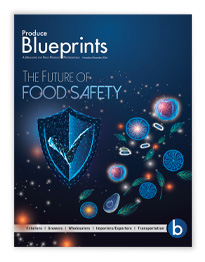The Trans-Pacific Partnership is the largest trade deal ever negotiated, and it offers an ambitious framework for free trade. Michael Froman, U.S. trade representative, believes the pact “will set the rules of the road for trade and investment for nearly 40 percent of the global economy.”
North American farm and food exporters are poised to benefit from the agreement, which will streamline rules for trade and, eventually, eliminate tariff barriers for many products. The U.S. fruit and vegetable industry has been a longtime supporter of the deal. Here’s a recap of where the Trans-Pacific Partnership began, a possible timeline for the U.S. approval process, and its probable impact on the fresh produce industry in the Americas.
WHAT AND WHY
The Trans-Pacific Partnership (TPP) is a trade agreement between 12 countries bordering the Pacific Ocean. They are the United States, Canada, and Mexico in North America; Chile and Peru in South America; and Australia, Brunei Darussalam, Japan, Malaysia, Singapore, and Vietnam in Asia and the Pacific Rim. These countries represent nearly 40 percent of the world’s gross domestic product. Large economies represented in the trade deal—the United States, Canada, and Japan—are joined by several fast-growing consumer markets like Vietnam and Malaysia.
For fruits and vegetables, TPP means a potential $2.4 billion increase in export values by 2024 according to U.S. Depart-ment of Agriculture (USDA) analysis—that’s a 16 percent increase in annual produce export value, the greatest increase of any agricultural value sector in the partnership. Only meat exporters, among U.S. farm and food groups, will realize higher returns as projected by the USDA’s Economic Research Service.
Most of the anticipated growth in fresh produce exports will come courtesy of tariff reductions in Asian countries. Some of the participating countries already have preferential trade agreements in place between themselves, for either very low or zero tariff rates on food and farm products, but other exporters may still face stiff tariffs.
Vietnam, for example, has a 30 percent tariff on melons from Mexico and a 20 percent tariff on U.S. lettuce, according to the USDA. Japan’s trade regime is also known for restrictive tariffs on farm and food products.
Japan’s stance was central to the negotiations. “Japan has made trade concessions on all commercially-sensitive ag products,” comments Jeffrey Schott at the Peterson Institute for International Economics, a pro-trade think tank. “The Japanese are going to commit to very substantial liberalization on their entire agricultural regime.”



